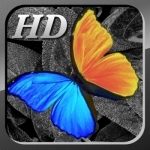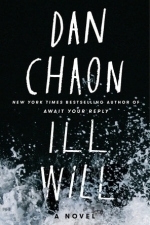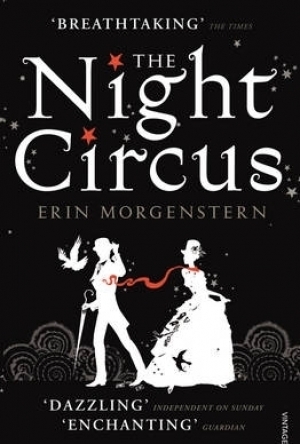
Darkroom – Photo Editor
Photo & Video and Social Networking
App
Save yourself from the multi-app workflow and discover the most well-designed, integrated, and...
Purple Phoenix Games (2266 KP) rated Orbital Conflict in Tabletop Games
Sep 10, 2019
Orbital Conflict is a player versus player (PvP) card game in which the winner is the player showing the most VPs on their cards at game end. It is a game where placement of cards and orientation of cards is paramount in creating a space station that can dole out damage, take a ton of damage, or hybridizes offense and defense using resources granted from off-station investors.
DISCLAIMER: We were provided a copy of this game for the purposes of this review. These are final components, and the game is available from the publisher and other online retail stores. Also, I do not intend to explicitly cover every rule for the game, but to give an idea of game flow and play. -T
To setup the game (in this case a 1v1 head-to-head bout) shuffle all the cards with the white back together and deal each player a hand of five. Shuffle the smaller investor cards to form a draw pile. Give the starting player the Initiative card and you are ready to start!
The game follows a simple game flow following three phases per round: Draw, Main, Combat. During the Draw phase, the player with the Initiative card (I’ll call them the active player) will draw two cards from the white-backed deck (which I will just call cards). Then the other player will draw two cards as well. The active player then draws two investor cards for themselves and places them in front of their play area as possible investors to claim. The other player does the same. If there are any cards containing discard abilities that a player would like to play during the Draw phase, and the discard text reads they may do so during the Draw phase or any phase, they may play them and follow the discard instructions now.
Once done, the game moves on to the Main phase. During this phase the active player will play any cards they wish that are appropriate for this phase, and then the other player will do the same. During this phase players will be playing cards from hand (and as many as they would like) to add on to their space station, activate modules that were previously deactivated, claim investor cards, and prepare for the next game phase. Space stations can be added to via modules. Modules can be single cards, or multiple splayed cards. As you can see in the photo above cards have icons to the left of the white barrier and some will also have icons to the right. Depending on how a card is added to a module certain icons may be covered and therefore inactive. When adding a card to a module (called an extension) the player decides if they want to add the card to the right of the splay, thus covering up icons to the right of the barrier of the covered card, or under the stack to the left of the splay. Additionally, players may flip any card over to have the back showing, which will provide icons usable in a station module. There are restrictions for playing cards, but I will let you discover those on your own.
The game follows a simple game flow following three phases per round: Draw, Main, Combat. During the Draw phase, the player with the Initiative card (I’ll call them the active player) will draw two cards from the white-backed deck (which I will just call cards). Then the other player will draw two cards as well. The active player then draws two investor cards for themselves and places them in front of their play area as possible investors to claim. The other player does the same. If there are any cards containing discard abilities that a player would like to play during the Draw phase, and the discard text reads they may do so during the Draw phase or any phase, they may play them and follow the discard instructions now.
Once done, the game moves on to the Main phase. During this phase the active player will play any cards they wish that are appropriate for this phase, and then the other player will do the same. During this phase players will be playing cards from hand (and as many as they would like) to add on to their space station, activate modules that were previously deactivated, claim investor cards, and prepare for the next game phase. Space stations can be added to via modules. Modules can be single cards, or multiple splayed cards. As you can see in the photo above cards have icons to the left of the white barrier and some will also have icons to the right. Depending on how a card is added to a module certain icons may be covered and therefore inactive. When adding a card to a module (called an extension) the player decides if they want to add the card to the right of the splay, thus covering up icons to the right of the barrier of the covered card, or under the stack to the left of the splay. Additionally, players may flip any card over to have the back showing, which will provide icons usable in a station module. There are restrictions for playing cards, but I will let you discover those on your own.

iGigBook Sheet Music Manager
Music and Productivity
App
Say goodbye to multiple 3 ring binders, suitcases full of books, and time wasted trying to find that...

PhotoWizard-HD Photo Editor
Photo & Video and Entertainment
App
Powerful Photo Editor for your iPad, the App that allows you to be creative with your photos. You...
Alice (12 KP) rated The Temptation of Dragons (Penny White #1) in Books
Jul 3, 2018
Original review can be found on my blog Raptureinbooks <a href="http://wp.me/p5y0lX-1Js">here</a href>
I was kindly offered this book by the author in exchange for an honest review and my initial impressions were "yeah this sounds like my kinda thing. Here there be dragons" ya know? Only to get more fully immersed in the book and find that I was a touch disappointed.
<i>The Temptation of Dragons</i> follows Reverend Penny White as she becomes the Vicar General of an alternate world called Lloegyr - please note that there is a heavy Welsh influence in this book coupled with an enormous religious influence - where dragons, unicorns, gryphons and more reside and coexist in relative peace.
The book starts with Penny White coming home slightly intoxicated and thinking she's going mad when she comes across a dying dragon. In true priestly form Penny gets out of her car and performs the last rites of absolution to what turns out to be a real dragon!
From that moment on Penny's life changes in so many ways - dragons exist, unicorns are real, snail sharks get drunk and gryphons are eating her garden birds. Penny is soon tasked to become the Vicar General to the citizens of Lloegyr and that includes all manner of supernatural beasties. Though expected as the main character is a priest, I didn't expect there to be such a heavy religious influence all throughout with literal verses from the Bible quoted on a regular.
Please understand that this is <b>not</b> anything against the book or against the writer and is merely my thoughts on what I considered an overly religious-toned story set in the wrong time period and the wrong world. I honestly found that the hardest part of reading this book but there were parts that I enjoyed for example: Penny White has what amounts to an obsession with sci-fi/fantasy and occult TV and movies, a lot of which were quite obscure for me (not really a TV and movie person *gasp*) I didn't get several of the references - particularly the Doctor Who ones.
Out of all of the characters my favourite had to be Moriarty - shortened to Morey for some reason - a 47-year-old gryphon with no filter. My favourite quote was from Penny about Morey:
<blockquote>"You've sent me a blue tit murdering creationist with sarcasm management issues."
"Correction. Today he's killing a starling."</blockquote>
The sarcasm and humour was rife throughout this book which was brilliant and gave it a nice light undertone to the ultimate seriousness of the book as a whole.
There was one character I didn't like and that was her brother James- I'm not 100% sure why but something about him rubbed me the wrong way. He's a free loading, insensitive toss pot and possibly a pod person.
However, despite my dislike of the heavy religious overtone and of James, I really, really liked <i>how</i> Chrys wrote the dragons and unicorns and all the other supernatural creatures and they had enough of a description without giving away too much important information; but also, on the flip side, there were away lot of unanswered questions such as how <i>exactly</i> does a unicorn use a telephone?
In all, it was a well written book with an interesting concept and some good characters and prose, dialogue was perfectly modern for Penny and a touch Olde World for a lot of the Lloegyr residents.
This book had an interesting premise: linking two sets of crimes in the past and present, but I felt like that premise was a little forced/falsified, and I never got into the book, or the characters. As a reader, you'll probably find the way it's written either brilliant or incredibly irritating, and I fell squarely into the irritating camp. There are very abrupt chapter switches between the present and the past that are quite annoying, making it difficult to tell exactly where you are in time. The changes in point of view aren't as bad, allowing you to hear from Dustin, his son, and others, but it still gets confusing quickly. (Sidebar: doesn't anyone just tell a linear story from one person's point of view anymore?)
Even more, the story is written quite like the characters think--which is fine in theory--for instance, this includes Dustin's tendency to just stop mid-sentence, something his family teases him about. After a bit you get somewhat used to the random sentences that end mid-thought, or the weird white spaces, but it's still strange. Other parts are the story are split into two or three parts on a page and told almost in parallel, causing you to flip back and forth to read each set. I never was quite sure of the point of that. Yes, people in the novel are going crazy and on drugs. I could get that concept and not have to flip back and forth constantly to read chunks of the story. It's one of those storytelling devices that, to me, could be amazing, but just winds up driving you slightly insane.
This novel is also very dark. Again, that's fine. I just finished The Roanoke Girls, which was incredibly dark, and loved it. But this one: I just didn't find it that interesting. I found myself finishing it more out of a vague curiosity and duty than anything else. I figured out one of the main plot points pretty on and wasn't engaged with any of the characters. Then, after all of this, the ending is awful and vague, and there's no resolution, and I found myself just throwing the whole thing down in disgust. Definitely not one of my favorites. I can see the potential for others, but it wasn't for me.
I received a copy of this novel from the publisher and Netgalley (thank you) in return for an unbiased review.

GoodScanner - PDF Scanner with OCR, Signature
Productivity and Business
App
GoodScanner is a Pocket scanner can quickly scan documents anywhere, anytime. you can scan list,...
Asiza Tait (139 KP) rated The Night Circus in Books
Feb 1, 2018
All of our readers enjoyed the beautiful descriptive writing of Erin. Some found the beginning a bit difficult to follow with the abrupt changes of time and scene, though others found the whole mystery of it all utterly engrossing.
Basically, there are two ancient magicians who set their two star pupils against each other to find out who is the best. The issues are that the pupils don't know the rules, or how the winner is declared. The competition arena, is the Night Circus.
There is a great deal that is left to the reader's imagination as not everything is completely explained, which only adds to the enigmas and magic entwined in everything. This is not an ordinary novel. We first get a full view of the almost playfulness of the magic and later the darker aspects of it are explored. How everyone involved in the circus whether directly or not is caught up in it and pays a price as well as benefits from it.
Walking through the circus is so beautifully written that it feels as if you are there, smelling the caramel popcorn and watching the white flames dancing. The joy of the circus permeates the pages, people who visit the circus leave it ever changed.
The love story between Marco and Celia is restrained, elegant and ultimately otherworldly in its strength and beauty. They 'write love letters' to each other through the different tents in the circus. The demonstrations of their affection to each other are so beautiful; so dazzling as to wish that everyone could find such love.
The competition though integral to the story becomes the hardest part to reconcile as the pages flip by and the costs mount up for the magic being used, the balancing that must be maintained. Some of these costs are very heavy, burdensome and even fatal. The darker side of the competition is shown in all it's sinister aspects and we are left waiting for the 'other shoe to drop' so to speak.
To show that this book is not for everyone, half of our readers adored this book and would absolutely recommend it as a must read, and the other half were not at all convinced, conceding only that the descriptive writing was excellent but the plot felt thin.





